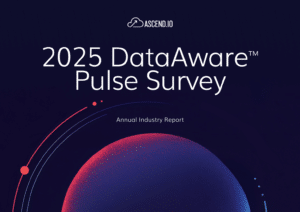How to Build a Data Pipeline in 6 Steps:
- Define the Pipeline’s Goal and Design the Architecture
- Choose Data Sources, Ingestion Strategy, & Validate Data
- Design the Data Processing Plan
- Set Up Storage and Orchestrate the Data Flow
- Deploy Your Pipeline & Set Up Monitoring and Maintenance
- Plan the Data Consumption Layer
Article updated on June 28, 2024.
Getting your hands on the right data at the right time is the lifeblood of any forward-thinking company. But let’s be honest, creating effective, robust, and reliable data pipelines, the ones that feed your company’s reporting and analytics, is no walk in the park. From building the connectors to ensuring that data lands smoothly in your reporting warehouse, each step requires a nuanced understanding and strategic approach.
In this article, we explore how to build a data pipeline from the ground up in six steps. But our journey doesn’t end there. Recognizing the complexities inherent in this process, we also introduce a framework designed to simplify and streamline the entire pipeline construction process, boosting efficiency and scalability along the way.
What Is a Data Pipeline?
Before we delve into the steps of building a data pipeline, it’s essential to set the stage by understanding what a data pipeline actually is. A data pipeline is the process of collecting data from its original sources and delivering it to new destinations — optimizing, consolidating, and modifying that data along the way.
A common misconception is to equate any form of data transfer with a data pipeline. However, this perspective overlooks the intricacies and transformative nature inherent in data pipelines.
While it’s true that a data pipeline involves moving data from one location to another, this definition is overly simplistic and doesn’t capture the essence of what sets a data pipeline apart. Transferring data from Point A to Point B, as done in data replication, doesn’t qualify as a data pipeline. The key differentiation lies in the transformational steps that a data pipeline includes to make data business-ready.
Ultimately, the core function of a pipeline is to take raw data and turn it into valuable, accessible insights that drive business growth. How exactly that happens can look very different from one organization — and one pipeline — to the next. However, despite these differences in how to build a data pipeline, there’s a kind of universal recipe, a series of steps, that lays the foundation for any successful data pipeline.
The 3 Basic Components of a Data Pipeline
Data pipelines can be very straightforward or remarkably complex, but they all share three basic components:
1. Ingestion Points at the Source
The journey of a data pipeline begins at its sources – or more technically, at the ingestion points. These are the interfaces where the pipeline taps into various systems to acquire data. The sources of data can be incredibly diverse, ranging from data warehouses, relational databases, and web analytics to CRM platforms, social media tools, and IoT device sensors. Regardless of the source, data ingestion, which usually occurs in batches or as streams, is the critical first step in any data pipeline.
2. Transformation and Processing
Once data is ingested from its sources, it undergoes essential transformations to become business-ready. The transformation components can involve a wide array of operations such as data augmentation, filtering, grouping, aggregation, standardization, sorting, deduplication, validation, and verification. The goal is to cleanse, merge, and optimize the data, preparing it for insightful analysis and informed decision-making.
3. Destination and Data Sharing
The final component of the data pipeline involves its destinations – the points where processed data is made available for analysis and utilization. Typically, this data lands in storage systems like data warehouses or data lakes, awaiting further analysis by analytics and data science teams. However, the pipeline can also extend to end applications that use this data, such as data visualization tools, machine learning platforms, and other applications, including API endpoints.
Steps to Build a Data Pipeline
Now that we understand the basic components, let’s dive into the steps on how to build a data pipeline.
When it comes to designing data pipelines, the choices made at the outset can have far-reaching impacts on the pipeline’s future effectiveness and scalability. This section serves as a guide for initiating the design process of a data pipeline, encouraging you to ask the right questions and consider key factors from the very beginning.
1. Define the Pipeline's Goal and Design the Architecture
The foundation of a successful data pipeline is a clear understanding of its purpose and the architectural framework that supports it.
Objective: Identify the specific outcomes and value the pipeline will bring to your organization, focusing on aligning tools and technologies with data requirements and business goals.
Questions to Ask:
What are the primary objectives of this data pipeline?
How will the success of the data pipeline be measured?
Which tools and technologies best align with our data needs and objectives?
What data models will support our goals effectively?
Actions:
Identify the primary goals of your pipeline, such as automating data reporting for monthly sales data.
Select technologies and tools, and design data models that support your objectives, like a star schema for a data warehouse.
2. Choose Data Sources, Ingestion Strategy, and Validate Data
Having defined your goals and architecture, the next phase is about pinpointing your data sources, determining how to ingest this data, and ensuring its accuracy.
Objective: Set up a system for collecting data from various sources and validate this data to ensure accuracy.
Questions to Ask:
What are all the potential sources of data?
In what format will the data be available?
What methods will be used to connect to and collect data from these sources?
How can we ensure the ingested data maintains its quality and accuracy?
Actions:
Establish connections to your data sources like CRM systems or social media platforms.
Implement processes to validate and clean incoming data, such as verifying data formats or removing duplicates
3. Design the Data Processing Plan
After data ingestion, the focus shifts to processing — turning raw data into something actionable.
Objective: Refine the data through specific transformations to make it suitable for analysis.
Questions to Ask:
What transformations are necessary to make the data useful (e.g., cleaning, formatting)?
Will the data be enriched with additional attributes?
How will redundant or irrelevant data be removed?
Actions:
Define and apply necessary data transformations (e.g., filtering, aggregating).
Code or configure the tools for carrying out these transformations.
4. Set Up Storage and Orchestrate the Data Flow
Once your data has been processed and validated, the next critical step when thinking about how to build a data pipeline is determining where it will be stored and how the data flow will be managed efficiently.
Objective: Decide on the optimal storage solutions for your processed data and orchestrate the data flow to ensure efficiency and reliability.
Questions to Ask:
What storage solutions (data warehouses, data lakes, etc.) best suit our processed data?
Will the storage be cloud-based or on-premises?
How will we manage and sequence the flow of data processes within our pipeline?
What strategies can we implement to handle parallel processing and failed jobs effectively?
Actions:
Choose appropriate storage solutions and design database schemas if needed.
Set up your pipeline orchestration, including scheduling the data flows, defining dependencies, and establishing protocols for handling failed jobs.
5. Deploy Your Pipeline and Set Up Monitoring and Maintenance
With your data storage selected and orchestration set, run the pipeline and focus on ensuring the pipeline’s ongoing health and security.
Objective: Deploy the pipeline ensuring it operates smoothly, and establish routines for monitoring and maintenance.
Questions to Ask:
What aspects of the pipeline need to be monitored?
How will data security be ensured?
How will the pipeline be maintained and updated over time?
Actions:
Set up the pipeline in your chosen environment (on-premises or cloud).
Set up monitoring to track the pipeline’s performance, and regularly update and maintain the pipeline.
6. Plan the Data Consumption Layer
Finally, it’s time to consider how the processed data will be put to use.
Objective: Determine how the processed data will be utilized by various services.
Questions to Ask:
What are the primary use cases for the processed data (e.g., analytics, machine learning)?
How will the data be accessed by different tools and applications?
Actions:
Set up the delivery process through which data will be made available to analytics tools, ML platforms, or other applications.
Navigating the Challenges of Building Data Pipelines
The process of how to build a data pipeline sounds straightforward at first glance, right? But let’s address the various elephants in the room:
Building Connectors: creating connectors to File Systems, DBs, Applications, Event Sources is far from simple. It is a never-ending activity as schemas change and APIs evolve. Security management is difficult and data collection needs to be idempotent.
Adapting to Change: In the world of data, change is the only constant. Data pipelines need to be flexible enough to adapt to changing requirements with minimal friction. This is crucial because changes can lead to the introduction of errors.
Reliable Hosting Environment: The hosting environment’s reliability is fundamental to ensuring the data pipelines meet the reporting requirements of the given organization.
After navigating these hurdles and completing the design of your data pipeline, the journey is far from over. The implementation and testing phases are resource-intensive, involving:
Burnt lots of design hours – Spent money on expensive Data Architects
Burnt lots of implementation hours – Spent money on expensive developers
Burnt lots of hours on testing – Spent money on Software Testers
Burnt lots of development hours on test architecture
Compromised on extracting data from difficult source
Once the data pipeline is operational, new challenges arise that continuously affect its performance and cost-effectiveness:
The cost of making changes to the pipeline, both in terms of resources and potential disruptions.
The cost of pipeline failures, which can have significant implications on data integrity and business operations.
Questions about the pipeline’s efficiency in terms of resource and cost utilization.
At this point, the challenges when building data pipelines are clear: a substantial amount of effort and financial resources are directed toward maintaining and optimizing operations rather than investing in new developments or innovations.
A Better Framework for Building Data Pipelines
The true essence and value of a data pipeline are encapsulated in its design and implementation. This phase is where the magic happens – innovative solutions are conceived, and strategic decisions are taken to turn raw data into meaningful, actionable insights. It’s the core of the entire data pipeline process, marked by a blend of critical thinking, creative problem-solving, and the application of deep technical expertise. The goal here is to construct a pipeline that not only aligns with but also effectively fulfills the specific data needs of an organization. This stage of crafting and building the pipeline is what we refer to as Build Engineering.
On the other hand, once a pipeline is up and running, the focus shifts to maintenance – ensuring that it continues to function as intended. This includes tasks like routine monitoring, tool integration, and quality management. While these tasks, known as Custodial Engineering, are crucial for the smooth operation of the pipeline, they don’t carry the same impact as the initial build phase. The value added by Custodial Engineering lies in sustaining and protecting the pipeline’s functionality, rather than in enhancing or expanding its capabilities.
Therefore, it’s crucial for organizations to direct their talent towards Build Engineering – the more impactful activities that drive innovation and progress. The goal should be to leverage the skills and creativity of their team in designing and implementing the pipeline, ensuring that their focus remains on activities that directly contribute to the organization’s growth and decision-making capacity, rather than on the custodial aspects that, while necessary, offer less in terms of strategic value.
If you are ready to see what removing custodial engineering from your day-to-day looks like, let us know.





